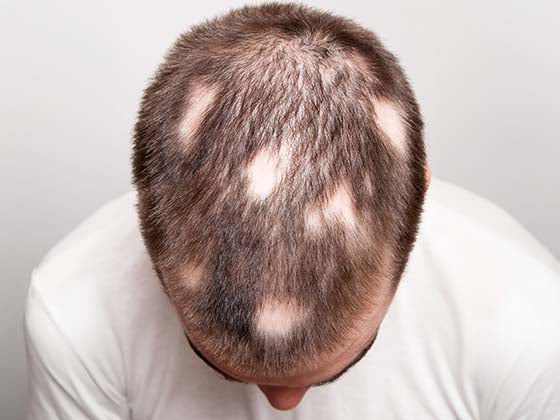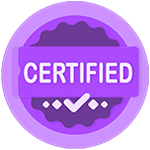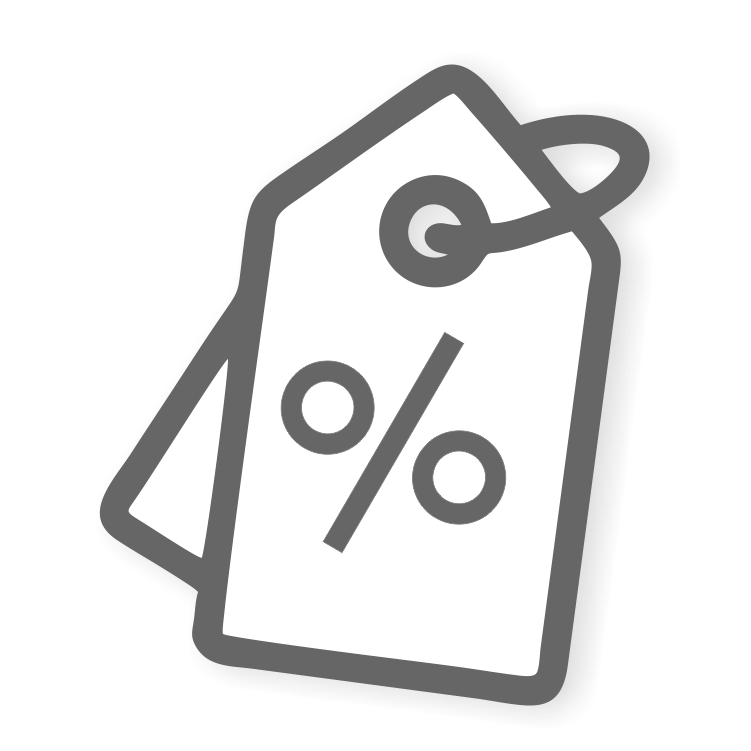Hair steaming is a deep conditioning treatment that uses steam to moisturize and nourish the hair and scalp. It is frequently used in conjunction with other hair care techniques to boost overall hair health. Hair steaming can be done in a salon or at home, using a hair steamer or a simple DIY setup. Discover the incredible benefits of steaming your hair for healthy, lustrous locks.
Understanding Hair Steaming: How It Works for Your Hair

Hair steaming is a simple but effective treatment that improves both hair strands and scalp. It hydrates dry hair, strengthens weakened strands, and promotes healthy hair development by increasing blood circulation and purifying the scalp. Hair steaming enhances the efficiency of your hair care products, allowing you to get softer, shinier, and healthier hair with less effort. Whether you're looking to treat dryness, minimize breakage, or simply rejuvenate your hair, steaming is a natural and effective remedy that can work wonders.
The Science Behind Hair Steaming and Hair Growth

Hair steaming is a fantastic therapy for anyone who wants to improve scalp health, moisturize dry hair, and encourage healthy hair development. Hair steaming promotes development by increasing circulation, opening hair cuticles, and promoting nutrient absorption. While it may not be a magic treatment for severe hair loss, it can be an important component of a comprehensive hair care regimen aimed at keeping hair strong, lustrous, and healthy.
How Heat and Moisture Improve Scalp Health

Heat and moisture combine to provide the ideal conditions for healthy hair and scalp development. The heat promotes blood circulation and opens pores, allowing moisture and hair treatments to be absorbed more effectively. Moisture keeps the scalp hydrated, nourished, and balanced, reducing dryness and flakiness, which can impede hair development. When used together, heat and moisture improve scalp health, encourage hair growth, and lower the incidence of scalp problems.
Common Misconceptions About Hair Steaming

Some of the most common misconceptions about hair steaming are:
-
Misconception: Many individuals assume that hair steaming can immediately accelerate hair growth.
-
Reality: Hair steaming promotes scalp health by boosting blood circulation and hydrating the scalp, but it has no direct effect on hair growth. Hair growth is affected by genetics, nutrition, hormones, and overall health. Steaming can create an ideal environment for hair to grow, but it does not guarantee a significant boost in growth pace.
-
Misconception: Hair steaming is frequently assumed to be only for dry, brittle, or chemically treated hair.
-
Reality: While steaming is especially useful for dry and damaged hair, it can also help healthy hair retain moisture and stay moisturized. Steaming your hair on a regular basis can help prevent dryness, frizz, and breakage, keeping it smooth, strong, and nourished. Steaming is beneficial for anybody seeking to maintain healthy hair, not just those with damaged strands.
-
Misconception: Some people feel that heating their hair is always good and harmless.
-
Reality: Steaming should be done in moderation. Over-steaming can make the scalp overly moist, which can result in scalp irritation, product accumulation, or even fungal infections. It is critical to determine the appropriate balance for your hair type. Steaming once a week or every two weeks is ideal, depending on your hair and scalp demands.
-
Misconception: Some individuals believe that the heat from steaming can injure hair, in the same way that excessive heat styling might.
-
Reality: Steaming hair is not the same as styling it with hot tools. Moisture mixed with heat opens the hair cuticles, allowing treatment ingredients to penetrate deeply and nourish the hair. Steaming, when done correctly, does not damage hair; instead, it is a gentle technique to nourish and promote the general health of your hair and scalp. However, it is critical to avoid utilizing excessively hot steam or applying it too frequently.
-
Misconception: Some people feel that simply steaming their hair is sufficient for hair care, eliminating the need for additional treatments such as conditioners, masks, and hair oils.
-
Reality: While steaming can hydrate the hair and scalp, the application of a deep conditioning treatment, hair mask, or oil during the steaming process increases the therapy's effectiveness. The steam opens the hair cuticle, allowing the nourishing products to penetrate deeper, resulting in better results. Without a treatment, steam alone will not provide the full benefits.
Top Benefits of Hair Steaming for Stronger, Healthier Hair

Hair steaming is a popular and efficient way to improve the health and strength of your hair. Steaming provides numerous benefits for keeping healthy, vibrant hair by infusing moisture into your strands, promoting circulation, and improving product absorption. The main advantages of hair steaming for stronger, healthier hair are:
-
Deep hydration for dry hair: One of the most significant advantages of hair steaming is its capacity to deeply moisturize the hair. The warm, moist environment created by steaming opens the hair cuticles, allowing moisture to permeate deeply into the hair shaft. This is especially good for dry, brittle hair because it restores moisture balance and protects against future damage.
-
Improves blood circulation in the scalp: Hair steaming's heat stimulates blood flow to the scalp, boosting circulation. Better circulation transports oxygen and necessary nutrients to the hair follicles, supporting a healthier scalp and stimulating hair growth.
-
Improves absorption of hair treatments: Hair steaming boosts the efficiency of hair masks, oils, and conditioner. When you heat your hair, the cuticles open up, allowing treatment ingredients to go deeper and nourish the hair shaft and scalp. This results in more efficient hydration, protein repair, and nourishment for healthier hair.
-
Reduces frizz and improves manageability: Steaming your hair seals moisture into the hair shaft, making frizz and flyaways simpler to handle. Hair that is moisturized and silky is easy to style and has fewer tangles.
-
Prevents and treats dry scalp conditions: Steaming your scalp can help relieve dry scalp symptoms such as flakiness, itching, and dandruff. The moisture from the steam hydrates the scalp, keeping it from becoming dry or itchy. This is especially useful during the colder months, when the scalp tends to lose moisture faster.
-
Boosts hair elasticity and reduces breakage: Steaming increases hair elasticity and reduces breakage by delivering deep moisture and nourishment. This increased moisture content may minimize the probability of hair breaking, particularly for people with curly, textured, or chemically treated hair, which is more prone to damage.
-
Promotes hair growth: While steaming may not directly cause hair to grow faster, it does help to create a healthier scalp environment, which is necessary for healthy hair growth. Increased circulation, along with moisture, can provide the optimal environment for hair follicles to develop and produce stronger strands.
Deep Hydration and Moisture Retention

Deep hydration and moisture retention are essential components of an effective hair care regimen. You can achieve stronger, shinier, and more manageable hair by hydrating it on a regular basis and employing moisture-locking procedures and products. Incorporating these activities into your regimen, along with a well-balanced diet and being hydrated, will help keep your hair healthy and moisturized, lowering the risk of dryness, frizz, and breakage.
Strengthening Hair Strands and Reducing Breakage

Strengthening hair strands and minimizing breakage necessitates a multifaceted approach that includes regular hydration, protein treatments, gentle handling, and protection. By adding these tactics into your routine, you can get thicker, healthier hair with fewer breakages and damage. Maintaining hair strength, whether through moisturizing products, protective hairstyles, or a balanced diet, requires creating a continuous, caring environment in which your strands can thrive.
Enhancing the Effects of Hair Treatments

Preparation, proper application techniques, and consistency are all required to maximize the results of hair treatments. By implementing these techniques into your hair care routine, you may maximize the effects of treatments and have thicker, healthier hair. Whether it's applying heat to increase penetration, combining products for a multifaceted approach, or simply being patient and gentle, these tiny changes can make a significant difference in the health and beauty of your hair.
The Right Way to Steam Your Hair: A Step-by-Step Guide

The following is a step-by-step guide on how to steam your hair correctly:
-
Step 1: Cleanse your hair: Before steaming your hair, carefully wash it to eliminate grime, oils, and product buildup. Clean hair allows the treatment you apply thereafter to penetrate deeply into the hair shaft. To cleanse your hair without stripping away its natural oils, use a gentle, sulfate-free shampoo. If your hair is very unclean, use a second shampoo to get a deeper clean.
-
Step 2: Apply your hair treatment: After washing, use your preferred deep conditioning mask or moisturizing treatment. Hair steaming works best when accompanied with a treatment because it opens the hair cuticle, allowing the substance to penetrate more effectively. Choose a treatment based on your hair type (hydration, repair, or nourishing). Use your hands or a wide-toothed comb to evenly spread the product from root to tip. Focus on the ends of your hair, as they are the dry.
-
Step 3: Section your hair: Dividing your hair into pieces will guarantee that the product is uniformly spread and that every strand receives the necessary treatment. Use hair clips to separate your hair into manageable sections. Working in parts will ensure that the treatment is administered evenly throughout your hair.
-
Step 4: Steam your hair: Now it's time to steam. If you have a hair steamer, the procedure is basic. If you're utilizing the DIY hot towel approach, you may get a similar result with a few simple steps. Set up your hair steamer, place it in the desired position, and steam for 15 to 20 minutes. The do-it-yourself hot towel method involves soaking your towel, wrapping it around your hair, and applying heat for 15 to 20 minutes.
-
Step 5: Relax and let the treatment absorb: While you’re steaming, you can take this time to relax and let the treatment deeply nourish your hair. Allow the steam to work its magic. The heat helps your cuticles open, allowing the treatment to penetrate deeply and nourish each strand from the inside out. If you wish, you can use your fingers to gently massage your scalp during the steaming process. This can help stimulate blood circulation and promote healthy hair growth.
-
Step 6: Rinse and moisturize: After steaming, it’s time to rinse your hair and lock in moisture. Rinse your hair with cool water to seal the cuticle after taking off the towel or steamer. This helps seal in the treatment and leaves your hair shiny and smooth. If you want to further hydrate and protect your hair, you can use a leave-in conditioner.
-
Step 7: Dry and style: After rinsing, gently towel dry your hair or allow it to air dry. Avoid vigorous towel drying, as this can cause damage to damp strands. To reduce frizz and prevent hair breakage, use a microfiber towel to blot away excess water. After steaming, it is best to avoid using heat styling tools to preserve the hydration and nourishment your hair just received. Let your hair dry naturally or use a blow dryer on a low heat setting.
Choosing the Best Hair Steaming Method

Depending on your objectives, time limits, and hair requirements, each steaming technique offers special benefits. There is a technique that works for you, whether you want a professional-caliber steaming experience or something more reasonably priced. When choosing the finest steaming technique, take into account your budget, the amount of time you can devote to your hair care regimen, and the particular requirements of your hair. Regardless, frequent steaming can increase hydration, lessen frizz, and enhance the general condition of your hair.
How Often Should You Steam Your Hair?

The frequency with which you should steam your hair is determined by a variety of factors, including your hair type, condition, and the precise goals you want to attain. Hair steaming can give deep hydration, enhance scalp health, and minimize breakage, but excessive use can result in unexpected side effects such as product buildup or extremely soft hair with no structure. Here's a guide to help you establish the best steaming frequency for your hair.
-
Dry or damaged hair: If your hair is dry, brittle, or damaged due to heat style, coloring, or environmental reasons, steaming once a week can help. Steam provides hydration and nutrients to your hair, allowing it to absorb treatments more efficiently and restoring its natural shine and suppleness.
-
Oily or fine hair: If your hair is fine or oily, steam it less regularly to avoid weighing it down or producing excessive oil buildup. Once every two weeks is usually enough to maintain your hair nourished and healthy without losing volume or making it appear oily.
-
Curly, coily, or coarse hair types are drier and may require extra moisture to keep them healthy and frizz-free. Steaming your curls once a week can help maintain them defined, smooth, and hydrated by allowing treatments like conditioners and oils to enter deeper.
-
Normal hair: If your hair is in decent condition (not too dry or oily), steam it every 2-4 weeks, or anytime you feel it needs a moisture boost. While steaming on a regular basis may not be necessary, periodic treatments can help maintain your hair lustrous and healthy.
-
Scalp health: If you're using steam to promote scalp health and increase circulation (which can help with hair development), steam your hair once a week or every two weeks, depending on your scalp's demands. For example, if you have a dry, flaky scalp or dandruff, steaming once a week can help moisturize and nourish the skin on your scalp.
-
After a deep conditioning mask or treatment: Steaming is very good for ensuring that the substance permeates deeply into the hair shaft. Once a week or as part of your usual deep-conditioning practice can improve the effectiveness of your treatments.
Common Mistakes to Avoid While Steaming

Hair steaming can be an extremely beneficial component of your hair care routine, but you must avoid common blunders that can diminish its effectiveness or even harm your hair. To achieve the greatest results when steaming your hair, avoid the following common mistakes:
-
Using too much water or steam: Using overly hot water or steam is one of the most common blunders people make when steaming their hair. Excessive heat can harm your hair and scalp, leaving it dry, brittle, or even resulting in burns.
-
Overdoing the steaming sessions: While steaming has many benefits, going overboard might result in undesirable results such as overly soft hair, limp strands, or product accumulation. Frequent steaming can also leave your hair overly hydrated, weakening it over time.
-
Not applying the appropriate hair treatment: Steaming your hair works best when combined with the appropriate hair mask or conditioner. Using the wrong treatment for your hair type or demands can result in unsatisfactory results, or worse, make your hair heavy or oily.
-
Improper hair preparation before steaming: Skipping the necessary pre-steaming preparations, including shampooing and detangling, may prevent the therapy from fully entering into your hair. Dirty or knotted hair will benefit less from the steaming process.
-
Not using steam properly: When using DIY methods such as a hot towel or a blow-dryer heat cap, ensure that the steam is uniformly spread throughout your hair. Inconsistent steam exposure can provide uneven treatment and ineffective outcomes.
-
Leaving the steam on for too long: Steaming your hair for a longer amount of time can result in an extremely soft or limp texture, and in certain situations, excessive heat can damage the hair shaft. Most steaming sessions should last little more than 20-30 minutes.
-
Not closing the hair cuticles after steaming: Steaming opens the hair cuticles, allowing treatments to enter more deeply. However, if you do not correctly close the cuticle afterward, moisture can escape, making your hair more susceptible to dryness or damage.
Is Hair Steaming Right for You? Expert Tips and Final Thoughts

Hair steaming can be an extremely efficient way to increase your hair's moisture levels, enhance treatments, and improve scalp health—but you must approach it with the proper mindset. It works best on dry, damaged, curly, or textured hair, but people with greasy or fine hair should use it sparingly. Make sure to listen to your hair's needs and change the frequency accordingly. You may maximize the benefits of hair steaming by selecting the correct treatments, steaming on a regular basis, and following the guidelines above. Always personalize your steaming practice to your specific hair type and issues, and remember that consistency and patience are essential for long-term results.
















